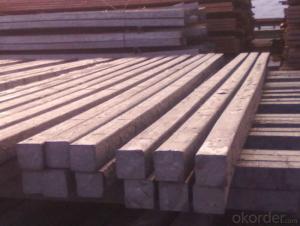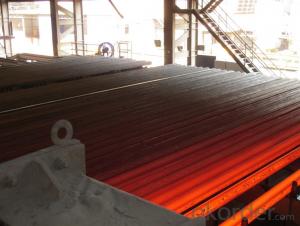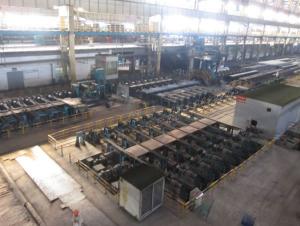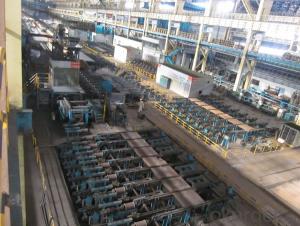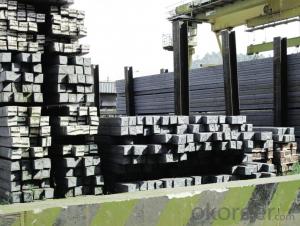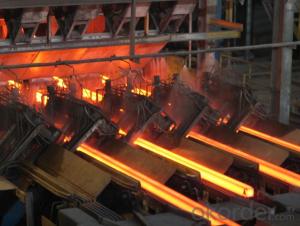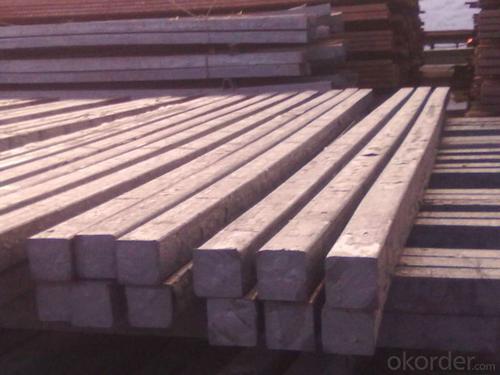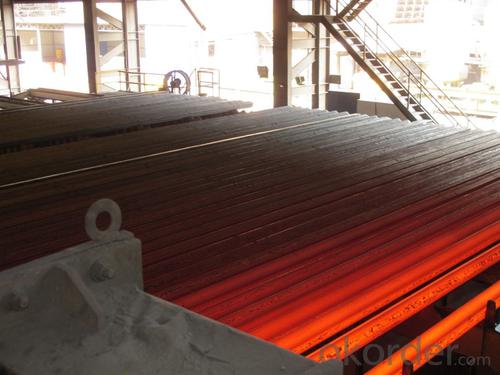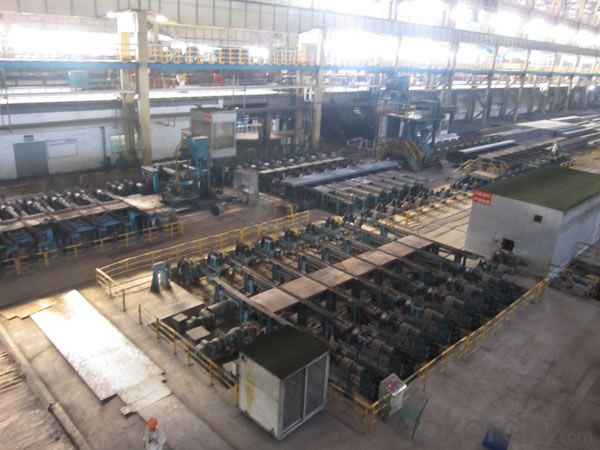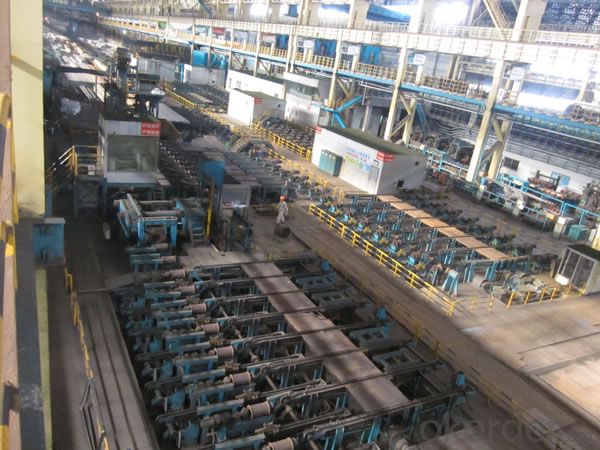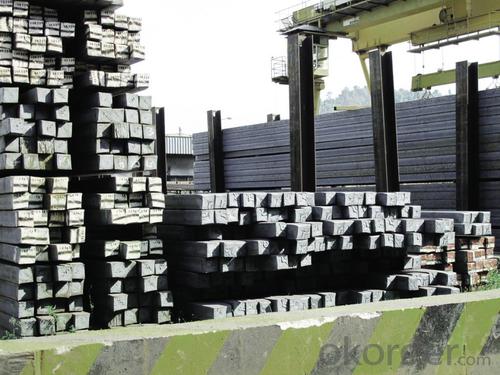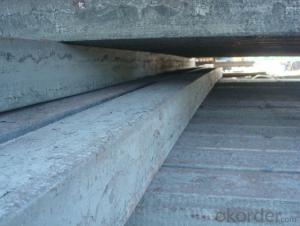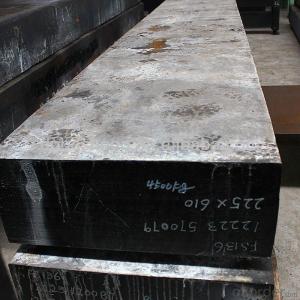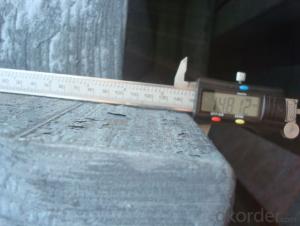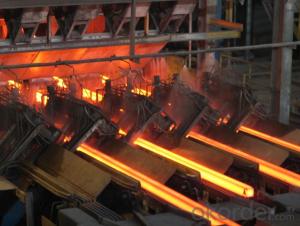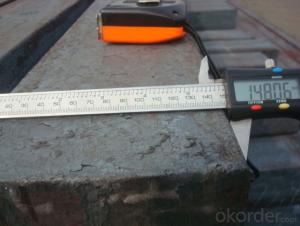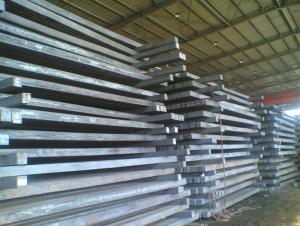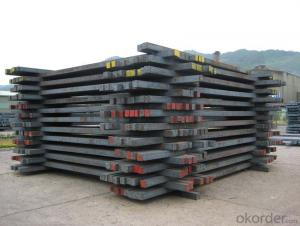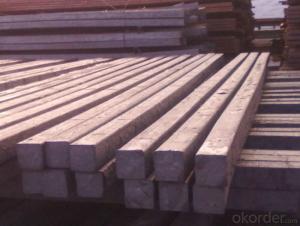Hot Rolled Square Steel Billet 3SP 80mm
- Loading Port:
- Shanghai
- Payment Terms:
- TT OR LC
- Min Order Qty:
- 2000 m.t.
- Supply Capability:
- 10000 m.t./month
OKorder Service Pledge
OKorder Financial Service
You Might Also Like
Structure of Hot Rolled Square Steel Billet 3SP 80mm
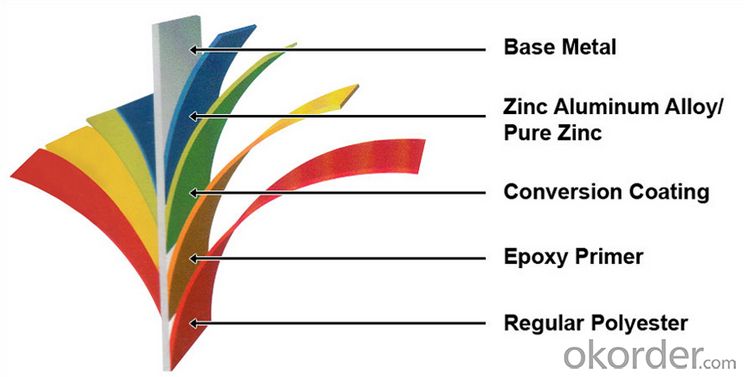
Description of Hot Rolled Square Steel Billet 3SP 80mm
PPGI is made by cold rolled steel sheet and galvanized steel sheets as baseplate, through the surface pretreatment (degreasing, cleaning, chemical conversion processing), coated by the method of continuous coatings (roller coating method),
and after roasting and cooling. Zinc coating: Z60, Z80, Z100, Z120, Z180, Z275, G30, G60, G90
Alu-zinc coating: AZ60, AZ80, AZ100, AZ120, AZ180, G30, G60, G90
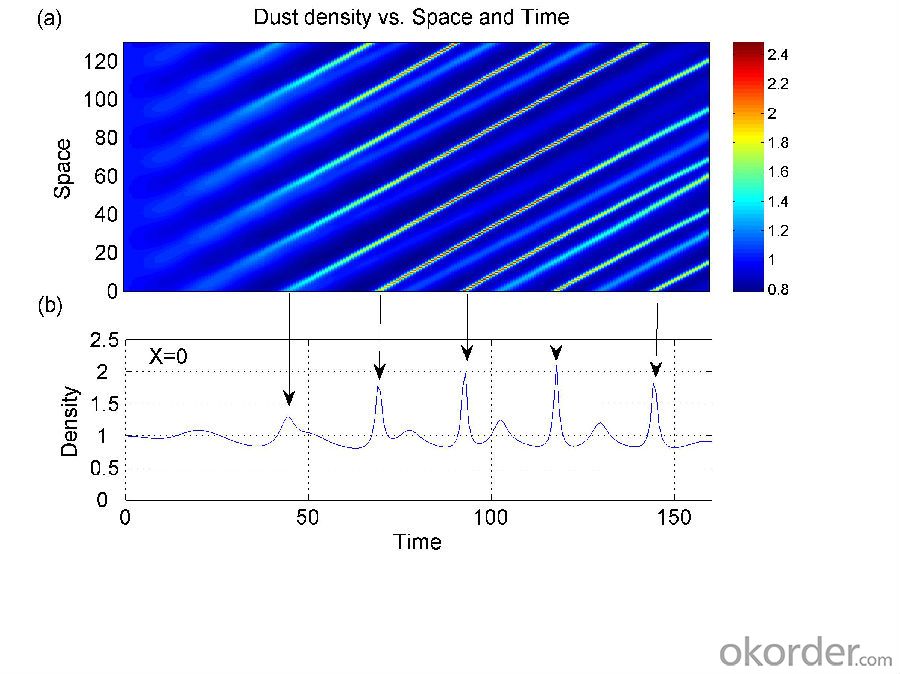
Main Feature of Hot Rolled Square Steel Billet 3SP 80mm
1) Excellent corrosion resistance: The zinc layer provides a good protection of Pre-painted Galvanizeed Steel Sheet.
2) High heat resistance: The reflective surface of the material aids in efficiently reflecting the sunlight away and in turn reducing the amount of heat transmitted. The thermal reflectivity converts into energy savings.
3) Aesthetics: Pre-Painted Galvanized steel sheet is available in plethora of patterns and multiple sizes as per the requirements that given by our customers.
4) Versatility: can be used in the various areas.Standard seaworthy export packing: 3 layers of packing, inside is kraft paper, water plastic film is in the middle and outside GI steel sheet to be covered by steel strips with lock, with inner coil sleeve.
Applications of Hot Rolled Square Steel Billet 3SP 80mm
1) Automotive bodies: filters, fuel tanks, etc.
2) Construction materials: roofings, welding pipes,
3) Electric and electronic appliances: computer cans, etc.
4) Steel cans: containers, etc.
5) Steel furniture: washing machines, refrigerators, microwaves, etc.
6) Drums
7) Office equipment: printer, recorders, etc.
8) Motors and transformers
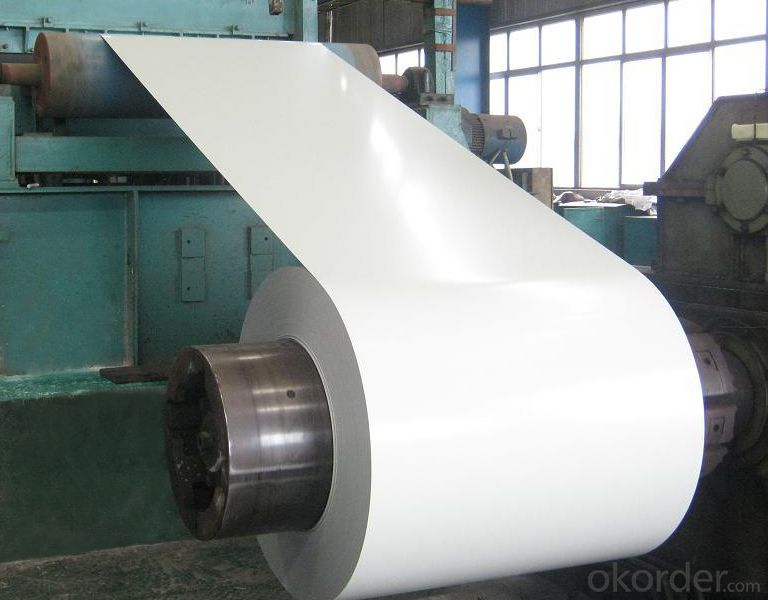
Specifications of Hot Rolled Square Steel Billet 3SP 80mm
| Classified symbol | Yield Point Minimum N/mm2 | Tensile Strength Minimum | Elongation Minimum % | Application | ||||
| N/mm2 | Nominal Thickness mm (t) | |||||||
| JIS | Yogic | 0.25-0.4 | 0.4-0.6 | 0.6-1.0 | 1.0-1.6 | |||
| G3312 | specification | |||||||
| CGCC | CGCC | -205 | -270 | -20 | -21 | -24 | -24 | Commercial |
| CGCD | CGCD | --- | 270 | --- | 27 | 31 | 32 | Drawing |
| --- | CG340 | 245 | 340 | 20 | 20 | 20 | 20 | Structural |
| CGC400 | CG400 | 295 | 400 | 16 | 17 | 18 | 18 | Structural |
| CGC440 | CG440 | 335 | 440 | 14 | 15 | 16 | 18 | Structural |
| CGC490 | CG490 | 365 | 490 | 12 | 13 | 14 | 16 | Structural |
| CGC570 | CG570 | 560 | 570 | --- | --- | --- | --- | Structural |
| ASTM Designation | Yield Point Minimum | Tensile Strength Minimum | Elongation Minimum % | Application | Q/BQB 445-2004(China standard) | ASM A653/A653M | JISG 3312 | |
| ksi(MPa) | ksi(MPa) | TDC51D+Z | (CS TYPE A+Z) | CGCC | ||||
| A653(M)-99 CS TYPE A,B,C | --- | --- | --- | Commercial | TDC52D+Z | CGCD | ||
| A653(M)-99 FS | --- | --- | --- | Lock Forming | TS250GD+Z | (G250+Z) | - | |
| A653(M)-99 DS | --- | --- | --- | Drawing | TS300GS+Z | (G300+Z) | CGC 400 | |
| A653(M)-99 SS Grade33(230) | 33(230) | 45(310) | 20 | Structural | TS350GD+Z | (G350+Z) | CGC490 | |
| A653(M)-99 SS Grade37(255) | 37(255) | 52(360) | 18 | Structural | TS550GD+Z | (G550+Z) | CGC570 | |
| A653(M)-99 SS Grade40(275) | 40(275) | 55(380) | 16 | Structural | ||||
| A653(M)-99 SS Grade50(345) | 50(345) | 65(450) | 12 | Structural | ||||
| A653(M)-99 SS Grade80(550) | 80(550) | 82(570) | --- | Structural | ||||
FAQ of Hot Rolled Square Steel Billet 3SP 80mm
We have organized several common questions for our clients,may help you sincerely:
1. How Can I Visit There?
Our company is located in Tianjin City, China, near Beijing. You can fly to Tianjin Airport Directly. All our clients, from home or aboard, are warmly welcome to visit us!
2. How Can I Get Some Sample?
We are honored to offer you sample.
3. Why choose CNBM?
1, ISO, BV, CE, SGS approved.
2, Competitive price and quality.
3, Efficient service team online for 24 hours.
4, Smooth production ability(50000tons/month) .
5, quick delivery and standard exporting package.
6, Flexible payment with T/T, L/C, Paypal, Kunlun bank, etc .
- Q: What is the cost of a steel billet?
- The cost of a steel billet can change based on several factors including size, grade, and market conditions. Steel billets are semi-finished products used as raw materials for various steel products. The price of a steel billet is typically given per metric ton. To determine the cost, one needs to consider the current market price of steel, which can fluctuate due to factors such as supply and demand, international trade policies, and global economic conditions. Furthermore, the grade of the steel billet can impact the cost since different grades have different levels of purity and specifications. It is crucial to contact steel suppliers or refer to market reports for accurate and current information on the cost of steel billets. Additionally, additional factors like transportation and handling costs may also affect the final price.
- Q: Are steel billets used in the production of electrical appliances?
- Steel billets are widely utilized in the production of electrical appliances. This versatile material possesses numerous benefits, including strength, durability, and corrosion resistance. Hence, it finds extensive application in manufacturing different components of electrical appliances, such as outer casings, frames, and internal structural supports. Steel billets serve as an intermediary product during the steel manufacturing process and can be further transformed into various shapes and sizes to cater to the specific demands of electrical appliance production.
- Q: How are steel billets heated for rolling?
- Steel billets are heated for rolling using a process called billet heating or billet reheating. This process involves subjecting the steel billets to high temperatures to make them more malleable and easier to shape during the rolling process. There are several methods used to heat steel billets for rolling. One common method is the use of a walking beam furnace. In this method, the steel billets are placed on a walking beam conveyor, which moves them through a furnace. The furnace is heated to a specific temperature, usually between 1100 to 1250 degrees Celsius, and the billets are exposed to this heat for a predetermined amount of time. The walking beam conveyor continuously moves the billets through the furnace, ensuring uniform heating. Another method used for billet heating is the use of a rotary hearth furnace. In this method, the steel billets are placed on a rotating hearth, which is heated by burners located underneath. As the billets rotate on the hearth, they are exposed to the heat emitted by the burners, gradually heating them up to the desired temperature. Induction heating is also a popular method for billet heating. In this method, an induction coil is used to generate an alternating magnetic field. The steel billets are placed inside the coil, and the magnetic field induces electrical currents within the billets, causing them to heat up. Induction heating is known for its efficiency and precise temperature control. Once the steel billets reach the desired temperature, they are ready for the rolling process. The heated billets are then transferred to a rolling mill, where they are further processed and shaped into various forms such as bars, rods, or sheets. The heating process is crucial as it allows the steel billets to become more ductile, reducing the risk of cracking or failure during the rolling process.
- Q: How do steel billets contribute to the manufacturing of construction equipment?
- Steel billets contribute to the manufacturing of construction equipment by serving as the raw material that is shaped and formed into different components such as beams, plates, and pipes. These billets are heated and then passed through various processes like rolling, forging, and machining to create the desired shape and size. The strength, durability, and versatility of steel make it an ideal material for construction equipment, ensuring that the machinery can withstand heavy loads, harsh environments, and demanding construction tasks.
- Q: How are steel billets used in the manufacturing of bars and rods?
- Bars and rods are manufactured using steel billets, which are an essential part of the process. These billets have a cylindrical shape and act as the starting point for producing different types of bars and rods. To begin, steel billets are commonly created through continuous casting. This method involves pouring molten steel into a mold, which then solidifies and forms a billet. To enhance their workability and reduce the risk of cracking during subsequent processes, the billets are usually heated to a specific temperature. After the preparation of the billets, they are sent to rolling mills where they undergo intense pressure and high temperatures. This process, known as hot rolling, gradually shapes the billet into the desired form by passing it through a series of rollers. Depending on the specific requirements of the bar or rod being produced, the rolling mills can be equipped with different types of rolls, such as flat rolls or grooved rolls. During hot rolling, the billet is elongated and reduced in cross-sectional area, resulting in a longer and thinner product. This transformation enables the production of bars and rods with consistent dimensions and improved mechanical properties. Moreover, the hot rolling process refines the grain structure of the steel, thereby enhancing its strength and toughness. Following hot rolling, the bars or rods may undergo additional processes to achieve specific characteristics. These processes may include quenching and tempering, which optimize the mechanical properties of the final product, such as hardness and ductility. In conclusion, steel billets are crucial in the manufacturing of bars and rods. They are transformed through the hot rolling process to achieve the desired shape, dimensions, and mechanical properties. The versatility of steel billets allows for the production of a wide range of bars and rods used in various industries, including construction, automotive, and manufacturing.
- Q: What are the different methods of steel billet surface coating?
- Various industries commonly utilize several methods for steel billet surface coating in order to enhance durability, corrosion resistance, and appearance. Some of these methods include: 1. Hot-dip galvanizing: Steel billets are immersed in molten zinc, creating a protective layer that offers exceptional corrosion resistance. This method finds wide application in construction, automotive, and infrastructure industries. 2. Electroplating: A thin layer of metal, such as chromium or nickel, is deposited onto the steel billets using an electric current. This process not only improves the steel's appearance but also provides a protective coating against corrosion. 3. Powder coating: Dry powder is electrostatically sprayed onto the steel billets' surface and then cured with heat, resulting in a hard, durable, and visually appealing coating. Powder coating offers excellent resistance to impact, corrosion, and chemicals. 4. Painting: Steel billets can be coated with paint through spraying, dipping, or brushing techniques. Paint coatings enhance the appearance of the steel while also providing protection against corrosion and weathering. 5. Thermal spray coating: Molten or semi-molten materials, including metals, ceramics, or polymers, are projected onto the steel billets' surface. Upon solidification, these materials form a protective coating. Thermal spray coatings offer excellent corrosion resistance, wear resistance, and thermal insulation. 6. Anodizing: Although commonly used for aluminum, anodizing can also be applied to steel billets. This process involves immersing the billets in an electrolyte solution and subjecting them to an electric current, resulting in a controlled oxidation reaction that forms a protective oxide layer. Anodizing improves corrosion resistance and appearance. Each method has its own advantages and suitability for specific applications. The choice of coating method depends on factors such as the intended use of the steel billets, environmental conditions, and desired coating properties.
- Q: What are the typical dimensions and weight of steel billets?
- The typical dimensions of steel billets can vary depending on their intended use and production process. However, common dimensions range from 100mm to 200mm in width and height, with lengths typically ranging from 3 to 12 meters. As for weight, steel billets can weigh anywhere from a few hundred kilograms to several metric tons, depending on their size and density.
- Q: How are steel billets used in the production of automotive parts?
- Steel billets are an essential component in the production of automotive parts. These billets are semi-finished steel products that are created through a casting process. They are usually rectangular or square in shape. In the automotive industry, steel billets are primarily used as a raw material for forging and rolling processes. They serve as the starting point for manufacturing a wide range of automotive components such as engine parts, transmission gears, crankshafts, connecting rods, and axle shafts, among others. One of the main applications of steel billets in automotive part production is forging. Forging involves shaping the billets into the desired shapes through the application of heat and pressure. This process enhances the strength and durability of the automotive parts. Forged components are known for their superior mechanical properties, including high strength, impact resistance, and resistance to fatigue failures. Common forged automotive parts include crankshafts, connecting rods, and suspension components. Another way steel billets are used in automotive part manufacturing is through the rolling process. Rolling involves passing the billets through a series of rollers to reduce their thickness and shape them into sheets or strips, which can then be further processed to make various components. Rolled steel is commonly utilized for manufacturing automotive body panels, chassis frames, and structural parts. Rolled components offer excellent formability, which is crucial for producing complex shapes and achieving high precision in automotive parts. In summary, steel billets play a vital role in the production of automotive parts. They are the starting point for forging and rolling processes, which are used to manufacture a wide range of components. By utilizing steel billets, automotive manufacturers can produce parts that possess exceptional strength, durability, and precision, ensuring the overall quality and performance of the vehicles they produce.
- Q: What are the different types of steel billet welding processes?
- There are several different types of steel billet welding processes that are commonly used in various industries. These processes include: 1. Shielded Metal Arc Welding (SMAW): Also known as stick welding, SMAW involves a flux-coated electrode that is manually fed into the welding pool. It is a versatile and widely used process for welding steel billets. 2. Gas Metal Arc Welding (GMAW): This process, commonly known as MIG welding, uses a continuously fed wire electrode and a shielding gas to protect the weld pool. It is a popular method for welding steel billets due to its efficiency and ease of use. 3. Flux-Cored Arc Welding (FCAW): FCAW is similar to GMAW, but it uses a tubular electrode filled with flux instead of a solid wire. This process is often preferred for outdoor or windy conditions as the flux provides better protection against atmospheric contamination. 4. Submerged Arc Welding (SAW): SAW involves feeding a consumable electrode and a granular flux into the weld zone, while the arc remains submerged beneath a layer of flux. It is commonly used for welding large steel billets due to its high deposition rates and deep penetration capabilities. 5. Gas Tungsten Arc Welding (GTAW): Also known as TIG welding, GTAW uses a non-consumable tungsten electrode and a shielding gas to protect the weld pool. It is a precise and high-quality welding process suitable for thin steel billets or applications that require exceptional weld aesthetics. 6. Electroslag Welding (ESW): ESW is a highly efficient process used for welding thick steel billets. It involves melting a consumable electrode and the base metal in a molten slag pool, which provides protection and acts as a filler material. 7. Laser Beam Welding (LBW): LBW utilizes a high-energy laser beam to melt and join steel billets together. It is a precise and fast welding process commonly used in industries such as automotive and aerospace. Each of these welding processes has its own advantages and limitations, and the choice of process depends on factors such as the type and thickness of the steel billet, desired weld quality, production requirements, and cost considerations.
- Q: How are steel billets used in the production of power generation equipment?
- Steel billets are used in the production of power generation equipment as they serve as the raw material for various components such as turbine blades, rotors, shafts, and casings. These billets are heated, forged, and machined to create the necessary shapes and sizes required for the efficient and reliable functioning of power generation equipment. The high strength and durability of steel make it an ideal choice for withstanding the extreme conditions and stresses involved in power generation processes.
Send your message to us
Hot Rolled Square Steel Billet 3SP 80mm
- Loading Port:
- Shanghai
- Payment Terms:
- TT OR LC
- Min Order Qty:
- 2000 m.t.
- Supply Capability:
- 10000 m.t./month
OKorder Service Pledge
OKorder Financial Service
Similar products
Hot products
Hot Searches
Related keywords
